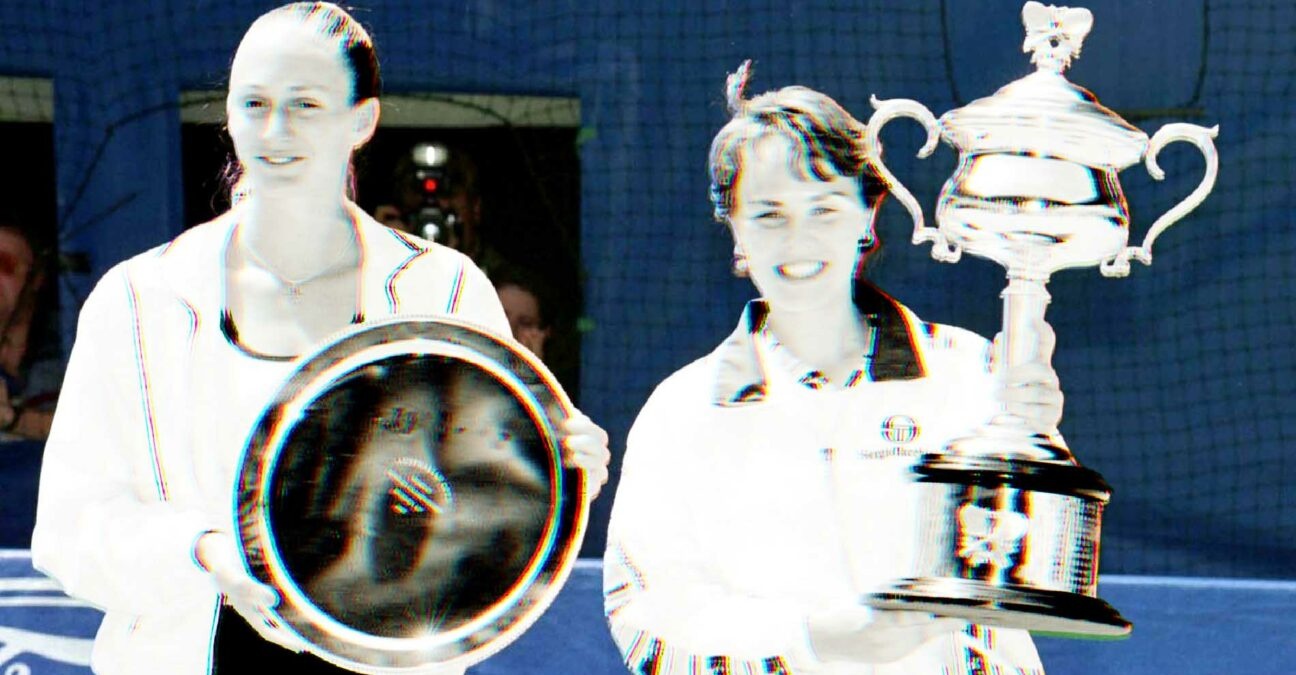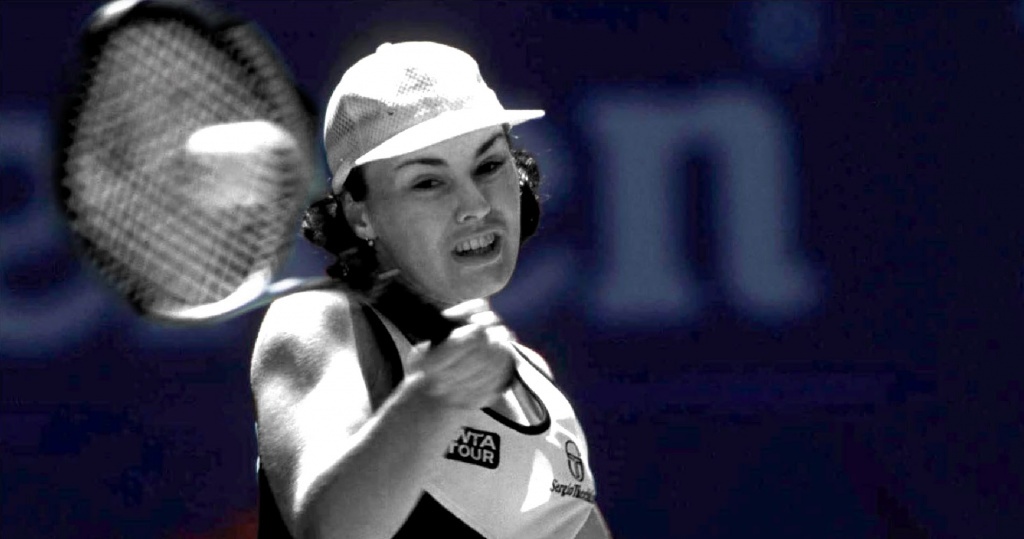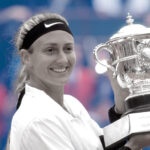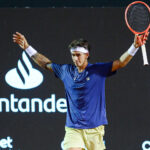January 25, 1997: The day Swiss Miss Martina Hingis became the youngest ever Grand Slam champion
Every day Tennis Majors takes you back in time to celebrate a great moment in tennis history. Today, we go back to 1997 to witness how Martina Hingis, aged 16 years, 3 months, and 26 days, defeated Mary Pierce in the Australian Open to become the youngest Grand Slam champion of the Open era.
 Martina Hingis 1997 Australian Open
Martina Hingis 1997 Australian Open
What happened exactly on that day?
On this day, Martina Hingis, the Swiss prodigy, defeated Mary Pierce in the final of the Australian Open (6-2, 6-2). Not only did 16-year-old Hingis become the youngest Grand Slam champion in the Open era – only topped by Lottie Dodd, who had won Wimbledon at the age of 15 in a different century, in 1887), but she also achieved the feat without dropping a single set. A few weeks later, the Swiss Miss would become the youngest world No 1 in WTA’s history.
”It’s a great win for me, and next time maybe I’ll play mixed doubles so I can win that too”
— Martina Hingis
The players: Martina Hingis and Mary Pierce
- Martina Hingis: the Swiss Miss
Martina Hingis was born in September 1980, and her mother Melanie Molitor named her after tennis champion Martina Navratilova. Taught by her mum, she soon became a real prodigy, winning the junior event at Roland-Garros at the age of 12. She started competing on the tour at 14, but was allowed to attend only 15 tournaments before the age of 16, a rule she protested: “How can I enter the top 10 like that?”
Hingis’ game relied on extraordinary hand-eye coordination, great tactics, amazing touch, and great anticipation. In her early career, Hingis was still said to lack power and a decent second serve. The youngest player to ever win a match at the Australian Open in 1995, she broke through in 1996. After defeating the undisputed world No 1, Steffi Graf, at the Italian Open in May, she reached the semi-finals at the US Open, where Graf beat her 7-5, 6-3, and she finished runner-up at the Masters Cup (defeated by Graf, this time in five sets, 6-3, 4-6, 6-0, 4-6, 6-0). She began 1997 by winning the Sydney Open (defeating Jennifer Capriati in the final, 6-1, 5-7, 6-1) and at the Australian Open, despite her young age, she was already the fourth seed.
- Mary Pierce: A French legend and two-time major singles champion
Mary Pierce was born in 1975 in Montreal, Canada, but, holding French citizenship from her mother, she chose to play for France. The youngest player at the time to make a professional debut, at the age of fourteen years and two months, she became a top player in 1991, when she claimed her first title in Palermo, and finished the year as world No 26. Her early career was impacted by her father’s violent behaviour, which, in 1993, led the WTA to ban him from attending any tournament, and led Mary to request a restrictive order after he threatened her life.
After claiming four other tournaments in the next two years and reaching the quarterfinals at the 1993 Australian Open, Pierce reached the final of the 1994 French Open. Before losing to Arantxa Sanchez (6-4, 6-4), she destroyed the world No 1, Steffi Graf, in the semi-final (6-2, 6-2), delivering one of the most impressive performances in the tournament’s history. A few months later, Pierce became the first French woman in 28 years to claim a Grand Slam title, triumphing at the 1995 Australian Open, taking her revenge against Sanchez in the final (6-3, 6-2). Injuries plagued her 1996 season, which she finished out of the top 15 (No 24) for the first time since 1991.
The place: Australian Open, Melbourne Park
Unlike the other Grand Slam tournaments, The Australian Open (first known as the Australasian Championships and, later, the Australian Championships) had moved several locations throughout the years. In fact, the event switched cities every year before it settled in Melbourne in 1972, and no less than five Australian cities had hosted the event at least three times: Melbourne, Sydney, Adelaide, Brisbane and Perth.
The event was originally held on grass at the Kooyong Stadium, in a posh easter suburb of Melbourne. Its timing had changed several times as well, between early December and January, going from being the first Grand Slam of the year to being the last. Until 1982, many of the best players skipped the Australian Open, mainly because of the remoteness, and the low prize money, but then, with the triumph of Mats Wilander, the dynamic changed. The tournament’s board made big efforts to become as prestigious as the other Grand Slams, which ended up with the event moving to a new location in 1988, in Flinders Park (later known as Melbourne Park), switching from grass to hard courts, and displaying the first-ever center court equipped with a retractable roof. Prizes increased as well, and it wasn’t long before the tournament became many player’s favourite Grand Slam.

The facts
In January 1997, Martina Hingis, although she was only 16 years old, was already far from being an unknown. In 1996, in Rome, she had defeated the world No 1, Steffi Graf, before reaching the semi-finals at the US Open and the final at the Masters Cup (defeated each time by the same Graf). The Swiss Miss arrived at the Australian Open filled with confidence after her title in Sydney and, in Melbourne, she stormed through her part of the draw and made her way into the final without dropping a single set.
This time, there would be no Steffi Graf in the final: to general astonishment, the German, who had won the last six Grand Slam tournaments she had attended and had not lost in one of the four major tournaments since the 1994 US Open, was eliminated in the fourth round by Amanda Coetzer, from South Africa (6-2, 7-5). Coetzer herself was stopped in the semi-finals by Mary Pierce, the 1995 Australian Open champion, ranked No 22 after a 1996 season plagued with injuries.
In each of their three previous encounters, the Frenchwoman had prevailed over Hingis in straight sets – at the 1995 Canadian Open, she had even blanked Hingis, 6-0, 6-0. However, a lot had happened to the Swiss since their last meeting, in Hamburg, in May 1996, and it quickly appeared that Pierce didn’t have any psychological edge over her young opponent.
In a 59-minute one-sided final, Hingis outclassed the 1995 champion, 6-2, 6-2, to become the youngest-ever winner of the Australian Open. She was also the youngest Grand Slam champion of the Open era, and the youngest one since 15-year-old Lottie Dodd had triumphed at Wimbledon in 1887. On top of that, Hingis had also become the first player since another famous Martina (Navratilova) in 1985, to also win the doubles event, which she did partnering Nastasha Zvereva.
”It’s a great win for me, and next time maybe I’ll play mixed doubles so I can win that too,” said Hingis, according to The New York Times.
This statement showed the incredible confidence, which some even called arrogance, displayed by the rising star.
”It’s probably human to get a little bit nervous, but I don’t know if she did or not; it doesn’t seem like very much gets to her,” Pierce said. ”Today was just her day.”
What happened next?
Martina Hingis would become the youngest world No 1 in WTA history less than two months later, on March 31, 1997.
An injury would prevent her from attending a single tournament on red dirt before Roland-Garros, where she would nevertheless reach the final and fall to Iva Majoli (6-4, 6-2). In the following months, she would increase her hold on the Tour, triumphing at Wimbledon (beating Jana Novotna in the final, 2-6, 6-3, 6-3), the US Open (defeating Venus Williams in the final, 6-0, 6-4) and at the 1998 Australian Open (defeating Conchita Martinez, 6-3, 6-3).
However the dominance would prove short-lived. Struggling to contain the power of the rising generation of players, including the Williams sisters, Hingis would only claim one more major crown, at the Australian Open, in 1999, but she would finish runner-up in no less than six other Grand Slam tournaments. She would appear at the top of the WTA rankings for the last time on October 14, 2001, having occupied the spot for a total of 209 weeks. After a heartbreaking loss to Jennifer Capriati in the final of the 2002 Australian Open, bothered by a foot injury, she announced her retirement in February 2003.
Hings would be back on the Tour in 2006, but she would never go past the quarter-finals of a Grand Slam tournament until she was tested positive for cocaine at Wimbledon and suspended at the end of the year. She would then come back a third time in the 2010s, in doubles, claiming four additional Grand Slam titles. Hingis would retire once and for all in 2017.
In 2000, Mary Pierce would make the dream of all French players come true by triumphing at Roland-Garros, defeating Conchita Martinez in the final (6-2, 7-5), claiming the title in doubles at the same time, partnering Martina Hingis. In her career, she would reach two other Grand Slam finals, at the 2005 French Open (lost to Justine Henin, 6-1, 6-1) and at the 2005 US Open (lost to Kim Clijsters, 6-3, 6-1). At the end of 2006, she ruptured her anterior cruciate ligament in her left knee, while playing against Vera Zvonareva in Linz, and she would never recover from that injury. This would remain her last match, although Mary Pierce would never officially announce her retirement.








